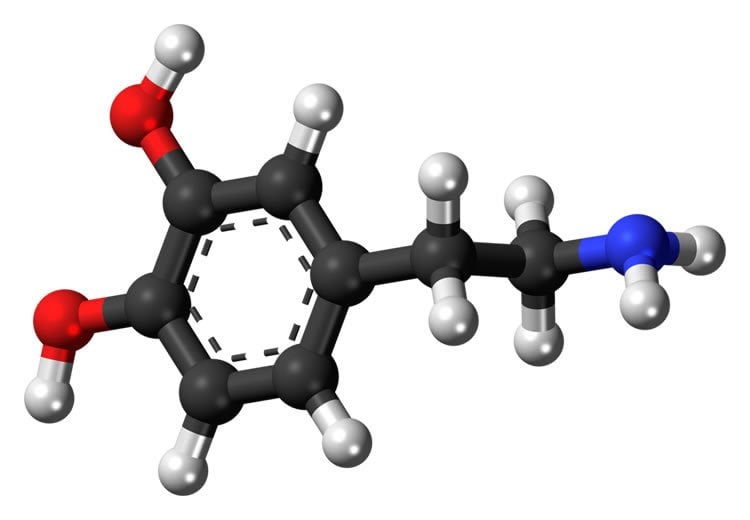Researchers at University of Florida Health have discovered the mechanics of how dopamine transports into and out of brain cells, a finding that could someday lead to more effective treatment of drug addictions and neurological disorders such as Parkinson’s disease.
The researchers, including Habibeh Khoshbouei, Pharm D., Ph.D., an associate professor of neuroscience in the UF College of Medicine, report their findings in the current edition of the journal Nature Communications, published today (Jan. 25).
The findings are significant because dopamine is involved in many brain-related functions, Khoshbouei said. Too little dopamine can lead to Parkinson’s disease, a brain disorder that causes shaking and problems with movement and coordination. Abnormally high concentrations of dopamine are linked to schizophrenia and other psychiatric disorders. Cocaine and methamphetamine affect the brain by blocking the normal transport of dopamine back into neurons.
Knowing how a particular protein called dopamine transporter controls dopamine movement in and out of neurons is crucial to further understanding dopamine-related disorders, Khoshbouei said.
“It’s an important first step. If we know how the dopamine transport system works, then we can start fixing it when it’s broken or malfunctioning,” she said.

The researchers’ findings offer a broader understanding of how dopamine moves through cell membranes. Using mouse and human-derived dopamine neurons, researchers found that dopamine movement is affected by changes in electrical properties of the neurons. That, in turn, changes the way dopamine transporters function.
Khoshbouei likens the dopamine transporter to a powerful, efficient “vacuum cleaner” that helps the brain maintain its normal chemical balance by rapidly drawing dopamine back into the neurons. In a normally functioning brain, dopamine is released from the neurons in response to pleasurable or life-sustaining activities, such as eating or sex. When the “vacuum cleaner” works properly, dopamine is eventually swept back into the neurons by the dopamine transporter, returning the brain to a less-stimulated state. Drugs such as cocaine and methamphetamine keep the brain stimulated by preventing neurons from “vacuuming up” excess dopamine.
Ultimately, it’s about balance: A properly functioning dopamine system controls movement, reward and pleasurable feelings. Imbalance in the dopamine transport system leads to neurological and neuropsychiatric diseases. Understanding the dopamine transport system is another step toward possibly being able to treat drug addictions or diseases related to dopamine imbalance, Khoshbouei said.
Funding: Grants from the National Institute on Drug Abuse and the National Institute of Neurological Disorders funded the research, which included collaborators from the University of North Dakota School of Medicine and the NIDA.
Source: Doug Bennett – University of Florida
Image Credit: The image is in the public domain
Original Research: Full open access research for “Membrane potential shapes regulation of dopamine transporter trafficking at the plasma membrane” by Ben D. Richardson, Kaustuv Saha, Danielle Krout, Elizabeth Cabrera, Bruce Felts, L. Keith Henry, Jarod Swant, Mu-Fa Zou, Amy Hauck Newman and& Habibeh Khoshbouei in Nature Communications. Published online January 25 2016 doi:10.1038/ncomms10423
Abstract
Membrane potential shapes regulation of dopamine transporter trafficking at the plasma membrane
The dopaminergic system is essential for cognitive processes, including reward, attention and motor control. In addition to DA release and availability of synaptic DA receptors, timing and magnitude of DA neurotransmission depend on extracellular DA-level regulation by the dopamine transporter (DAT), the membrane expression and trafficking of which are highly dynamic. Data presented here from real-time TIRF (TIRFM) and confocal microscopy coupled with surface biotinylation and electrophysiology suggest that changes in the membrane potential alone, a universal yet dynamic cellular property, rapidly alter trafficking of DAT to and from the surface membrane. Broadly, these findings suggest that cell-surface DAT levels are sensitive to membrane potential changes, which can rapidly drive DAT internalization from and insertion into the cell membrane, thus having an impact on the capacity for DAT to regulate extracellular DA levels.
“Membrane potential shapes regulation of dopamine transporter trafficking at the plasma membrane” by Ben D. Richardson, Kaustuv Saha, Danielle Krout, Elizabeth Cabrera, Bruce Felts, L. Keith Henry, Jarod Swant, Mu-Fa Zou, Amy Hauck Newman and& Habibeh Khoshbouei in Nature Communications. Published online January 25 2016 doi:10.1038/ncomms10423






